Monthly Updates on Recent Books in the History of Christianity
To raise awareness of recent books in the history of Christianity, the editorial staff of Church History: Studies in Christianity and Culture highlights each month a list of 10-15 books in diverse periods and geographical regions that we hope will be of interest to our members. We include here below the twenty first monthly list, chosen by our staff, with excerpts from the publishers’ blurbs.

Karma Ben-Johanan, Jacob’s Younger Brother: Christian-Jewish Relations after Vatican II. 2022
The Belknap Press of Harvard University Press
A new chapter in Jewish–Christian relations opened in the second half of the twentieth century when the Second Vatican Council exonerated Jews from the accusation of deicide and declared that the Jewish people had never been rejected by God. In a few carefully phrased statements, two millennia of deep hostility were swept into the trash heap of history.
But old animosities die hard. While Catholic and Jewish leaders publicly promoted interfaith dialogue, doubts remained behind closed doors. Catholic officials and theologians soon found that changing their attitude toward Jews could threaten the foundations of Christian tradition. For their part, many Jews perceived the new Catholic line as a Church effort to shore up support amid atheist and secular advances. Drawing on extensive research in contemporary rabbinical literature, Karma Ben-Johanan shows that Jewish leaders welcomed the Catholic condemnation of antisemitism but were less enthusiastic about the Church’s sudden urge to claim their friendship. Catholic theologians hoped Vatican II would turn the page on an embarrassing history, hence the assertion that the Church had not reformed but rather had always loved Jews, or at least should have. Orthodox rabbis, in contrast, believed they were finally free to say what they thought of Christianity.
Jacob’s Younger Brother pulls back the veil of interfaith dialogue to reveal how Orthodox rabbis and Catholic leaders spoke about each other when outsiders were not in the room. There Ben-Johanan finds Jews reluctant to accept the latest whims of a Church that had unilaterally dictated the terms of Jewish–Christian relations for centuries.

Matteo Al Kalak, The Heresy of the Brothers: A Heterodox Community in Sixteenth-Century Italy. 2022
Around the mid-sixteenth century, one of the largest Italian heterodox communities developed in Modena: the community of ‘Brothers’. At the beginning of the century, a flourishing humanistic tradition had inspired protests against the authority of the Church and had led many of the city’s prominent figures to sympathize with Luther and the Reformation. Over the following decades, such positions became more extreme: most of the ‘Brothers’ held radical convictions, ranging from belief in predestination to contestation of the Antichrist pope. In some cases, the ‘Brothers’ even went so far as to deny the value of baptism.
This heterodox community in Modena created a hidden network for the free expression of its reformed faith. Within twenty years, however, the election of Pope Pius V (1566-1572) and the consolidation of the Holy Office led to a harsh campaign to disperse dissenters in the city. Despite the protection of illustrious members of the Roman Catholic hierarchy, the bishops of Modena, and the dukes of Ferrara, the Holy Office succeeded in repressing the community. The history of the ‘Brothers’ of Modena therefore provides a case study for understanding how the Inquisition influenced the balance of religious Italy, changing the face of the Peninsula forever.
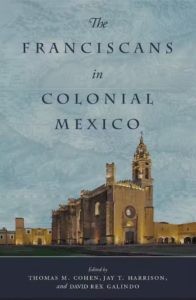
Thomas M. Cohen, Jay T. Harrison, David Rex Galindo, eds. The Franciscans in Colonial Mexico. 2021
Generations of scholars have studied the multifaceted experiences of the Franciscans in Mexico and how the Franciscan order shaped New Spain and the early Mexican republic. Recent scholarship has given long-overdue attention to the evangelized natives. Most of these works focus on a specific region or period, or on a particular aspect of Franciscan ministries in New Spain. A comprehensive account of the Franciscans in Mexico over the long term has been missing, until now.
This book analyzes the Franciscans’ engagement with native peoples, creole populations, the viceregal authorities, and the Spanish empire as a whole in order to offer a broad picture of Catholic evangelization in North America while keeping the Franciscans at the center of the story. Published in 2021, during commemoration of the quincentenary of the Spanish—and thus the Franciscan—presence in Mexico, the book brings together the research of junior and senior scholars from Mexico, Spain, and the United States on the long-enduring and far-reaching Franciscan presence in Mexico.

Hugh Liebert, Gibbon’s Christianity: Religion, Reason, and the Fall of Rome. 2022
The Pennsylvania State University Press
There has never been much doubt about the faith of the “infidel historian” Edward Gibbon. But for all of Gibbon’s skepticism regarding Christianity’s central doctrines, the author of The History of the Decline and Fall of the Roman Empire did not merely seek to oppose Christianity; he confronted it as a philosophical and historical puzzle. Gibbon’s Christianity tallies the results and conditions of that confrontation.
Using rich correspondence, private journals, early works, and memoirs that were never completed, Hugh Liebert provides intimate access to Gibbon’s life in order to better understand his complex relationship with religion. Approaching the Decline and Fall from the context surrounding its conception, Liebert shows how Gibbon adapted explanations of the Roman republic’s rise to account for a new spiritual republic and, subsequently, the rise of modern Europe. Taken together, Liebert’s analysis of this context, including the nuance of Gibbon’s relationship to Christianity, and his readings of Gibbon’s better- and lesser-known texts suggest a historian more eager to comprehend Christianity’s worldly power than to sneer at or dismiss it.
Eminently readable and wholly accessible to anyone interested in or familiar with the Decline and Fall, this groundbreaking reassessment of Gibbon’s most famous work will appeal especially to scholars of eighteenth-century studies.

John Jeffries Martin, A Beautiful Ending: The Apocalyptic Imagination and the Making of the Modern World. 2022
In this revelatory immersion into the apocalyptic, messianic, and millenarian ideas and movements that created the modern world, John Jeffries Martin performs a kind of empathic time travel-entering into the psyche, spirituality, and temporalities of a cast of historical actors in profound moments of discovery. He argues that religious faith-Christian, Jewish, and Muslim-did not oppose but rather fostered the making of a modern scientific spirit, buoyed along by a providential view of history and nature, and a deep conviction in the coming End of the World. Through thoughtful attention to the primary sources, Martin re-reads the Renaissance, excavating a religious foundation at the core of even the most radical empirical thinking. Familiar icons like Ibn Khaldun, Columbus, Isaac Luria, and Francis Bacon emerge startlingly fresh and newly gleaned, agents of a history formerly untold and of a modern world made in the image of its imminent end.
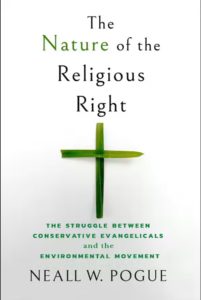
Neall W. Pogue, The Nature of the Religious Right: The Struggle Between Conservative Evangelicals and the Environmental Movement. 2022
In The Nature of the Religious Right, Neall W. Pogue examines how white conservative evangelical Christians became a political force known for hostility toward environmental legislation. Before the 1990s, this group used ideas of nature to help construct the religious right movement while developing theologically based, eco-friendly philosophies that can be described as Christian environmental stewardship. On the twentieth anniversary of Earth Day in 1990, members of this conservative evangelical community tried to turn their eco-friendly philosophies into action. Yet this attempt was overwhelmed by a growing number in the leadership who made anti-environmentalism the accepted position through public ridicule, conspiracy theories, and cherry-picked science.
Through analysis of rhetoric, political expediency, and theological imperatives, The Nature of the Religious Right explains how ideas of nature played a role in constructing the conservative evangelical political movement, why Christian environmental stewardship was supported by members of the community for so long, and why they turned against it so decidedly beginning in the 1990s.

Stefano Villani, Making Italy Anglican: Why the Book of Common Prayer was Translated into Italian. 2022
For almost three hundred years there were those in England who believed that an Italian translation of the Book of Common Prayer could trigger radical change in the political and religious landscape of Italy. The aim was to present the text to the Italian religious and political elite, in keeping with the belief that the English liturgy embodied the essence of the Church of England. The beauty, harmony, and simplicity of the English liturgical text, rendered into Italian, was expected to demonstrate that the English Church came closest to the apostolic model. Beginning in the Venetian Republic and ending with the Italian Risorgimento, the leitmotif running through the various incarnations of this project was the promotion of top-down reform according to the model of the Church of England itself.
These ventures mostly had little real impact on Italian history: as Roy Foster once wrote, "the most illuminating history is often written to show how people acted in the expectation of a future that never happened." This book presents one of those histories. Making Italy Anglican tells the story of a fruitless encounter that helps us better to understand both the self-perception of the Church of England's international role and the cross-cultural and religious relations between Britain and Italy. Stefano Villani shows how Italy, as the heart of Roman Catholicism, was--over a long period of time--the very center of the global ambitions of the Church of England.
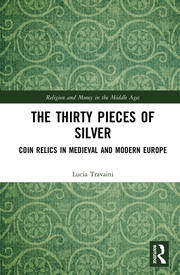
Lucia Travaini, The Thirty Pieces of Silver: Coin Relics in Medieval and Modern Europe. Religion and Money in the Middle Ages. 2022
The Thirty Pieces of Silver: Coin relics in medieval and modern Europe discusses many interconnected topics relating to the most perfidious monetary transaction in history: the betrayal of Jesus by Judas for thirty pieces of silver. According to medieval legend, these coins had existed since the time of Abraham’s father and had been used in many transactions recorded in the Bible. This book documents fifty specimens of coins which were venerated as holy relics in medieval and modern churches and monasteries of Europe, from Valencia to Uppsala. Most of these relics are ancient Greek silver coins in origin mounted in precious reliquaries or used for the distribution of their wax imprints believed to have healing powers.
Drawing from a wide range of historical sources, from hagiography to numismatics, this book will appeal to students and academics researching Late Antique, Medieval, and Early Modern History, Theology, as well as all those interested in the function of relics throughout Christendom. The Thirty Pieces of Silver is a study that invites meditation on the highly symbolic and powerful role of money through coins which were the price, value, and measure of Christ and which, despite being the most abject objects, managed to become relics.
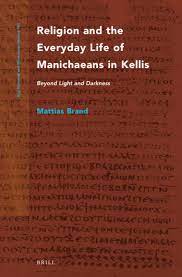
Mattias Brand, Religion and the Everyday Life of Manichaeans in Kellis: Beyond Light and Darkness. 2022
Religion is never simply there. In Religion and the Everyday Life of Manichaeans in Kellis, Mattias Brand shows where and when ordinary individuals and families in Egypt practiced a Manichaean way of life. Rather than portraying this ancient religion as a well-structured, totalizing community, the fourth-century papyri sketch a dynamic image of lived religious practice, with all the contradictions, fuzzy boundaries, and limitations of everyday life. Following these microhistorical insights, this book demonstrates how family life, gift-giving, death rituals, communal gatherings, and book writing are connected to our larger academic debates about religious change in late antiquity.
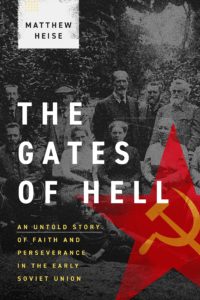
Matthew Heise, The Gates of Hell: An Untold Story of Faith and Perseverance in the Early Soviet Union. 2022
Decimated by war, revolution, and famine, the Evangelical Lutheran Church of Russia was in critical condition in 1921. In The Gates of Hell, Matthew Heise recounts the bravery and suffering of German—Russian Lutherans during the period between the two great world wars. These stories tell of ordinary Christians who remained faithful to death in the face of state persecution.
Christians in Russia had dark days characterized by defeat, but God preserved his church. Against all human odds, the church would outlast the man—made sandcastles of communist utopianism. The Gates of Hell is a wonderful testimony to the enduring power of God's word, Christ's church, and the Spirit's faithfulness.
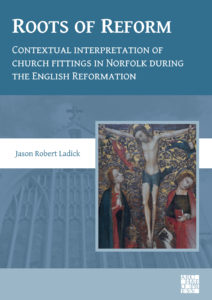
Jason Robert Ladick, Roots of Reform: Contextual Interpretation of Church Fittings in Norfolk During the English Reformation. 2021
Roots of Reform provides a thorough examination of the impact of the English Reformation through a detailed analysis of medieval and early modern church fittings surviving at parish churches located throughout the county of Norfolk in England. By utilizing an archaeological approach along with the written record, a deeper and more nuanced understanding of public worship reveals the theological imperatives of the reformers and conformers. This study compiled data from both rural and urban parish churches which provides a regional approach to engaging the issues of visuality, space and identity. Church fittings were selected based on their liturgical function and propensity to feature decorative iconography. This includes baptismal fonts, screens, wall paintings, and sculptures. Through an extensive analysis of church fittings, this research is the first to suggest that the Bible-centric component to Protestant theology provided the framework which contributed to the success of the Reformation. The religious identity of England was transformed as visual continuity enabled an entire generation to continue their religious experience in a traditional context despite the moderate alteration to liturgy and comprehensive transformation of doctrine. This criterion eased the transition, as liturgical continuity and selective iconoclasm forged a new physical religious environment that retained enough elements to satiate traditionalist. Furthermore, an assessment of post-Reformation innovations reveals the use of vernacular Biblical text as a preferred mode of decoration, with an increase in the use of secular heraldry and commemoration directly on church fittings.

Wolfgang P. Müller, Marriage Litigation in the Western Church, 1215-1517. 2021
From the establishment of a coherent doctrine on sacramental marriage to the eve of the Reformation, late medieval church courts were used for marriage cases in a variety of ways. Ranging widely across Western Europe, including the Upper and Lower Rhine regions, England, Italy, Catalonia, and Castile, this study explores the stark discrepancies in practice between the North of Europe and the South. Wolfgang P. Müller draws attention to the existence of public penitential proceedings in the North and their absence in the South, and explains the difference in demand, as well as highlighting variations in how individuals obtained written documentation of their marital status. Integrating legal and theological perspectives on marriage with late medieval social history, Müller addresses critical questions around the relationship between the church and medieval marriage, and what this reveals about both institutions.
Finally, for staying up-to-date on the latest titles in all fields, we recommend regularly perusing New Books Network and its "New Books in Christian Studies” page. These pages are updated regularly.
